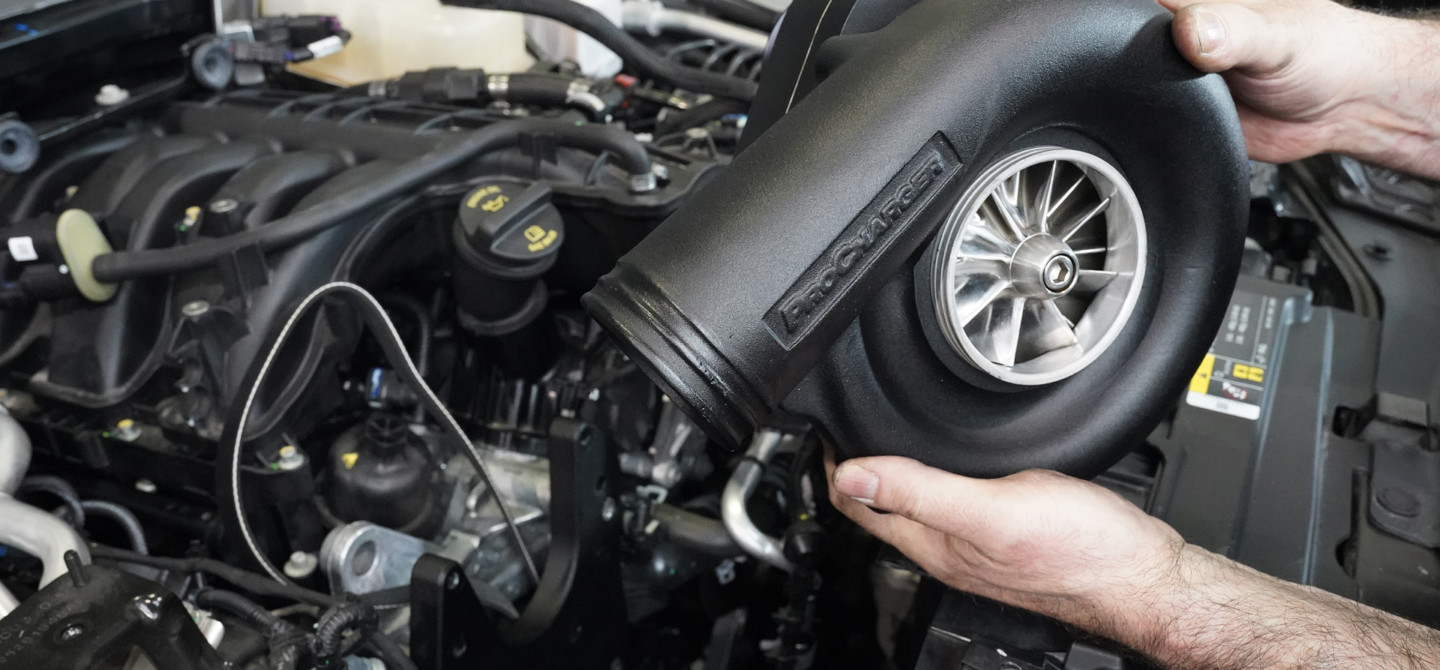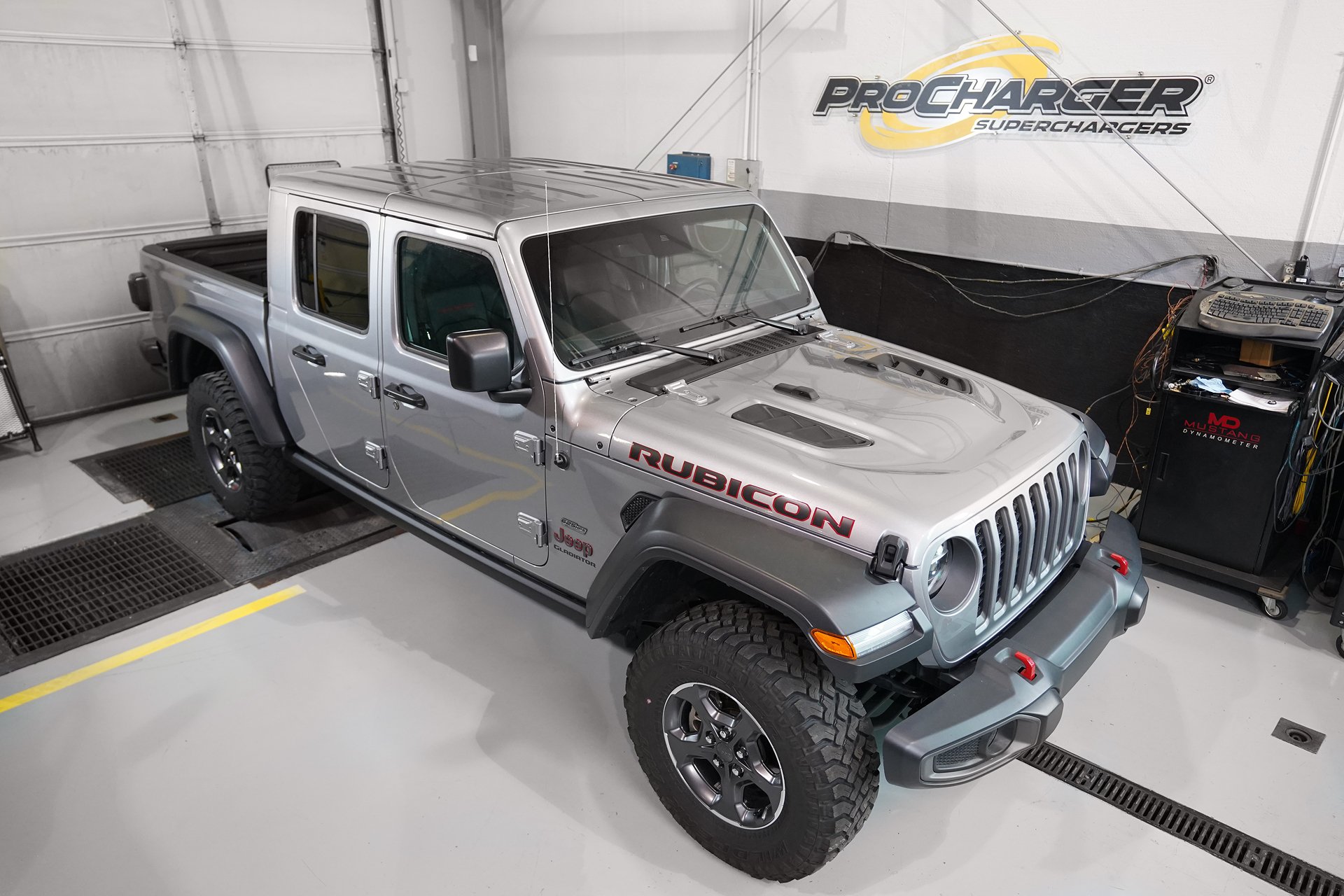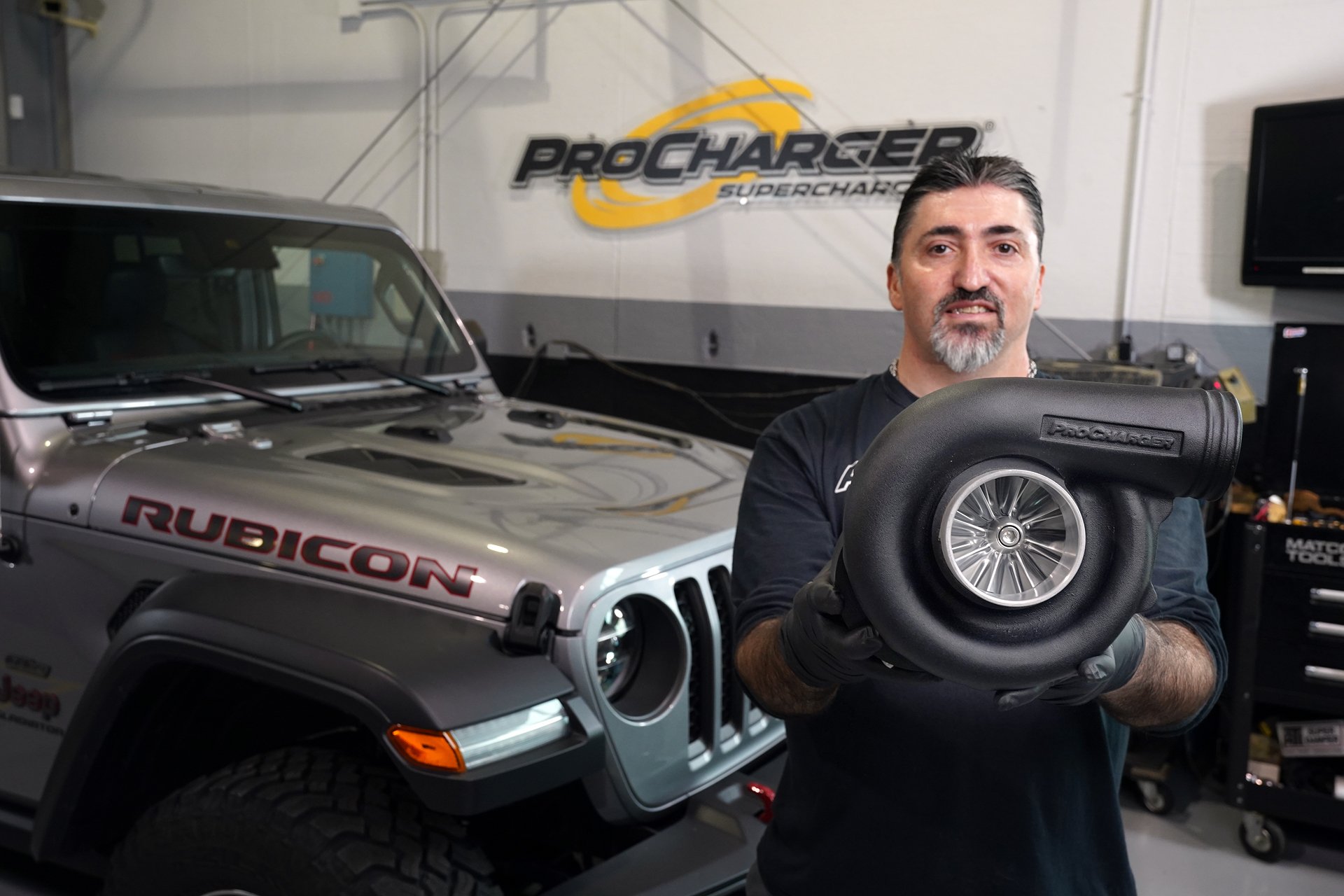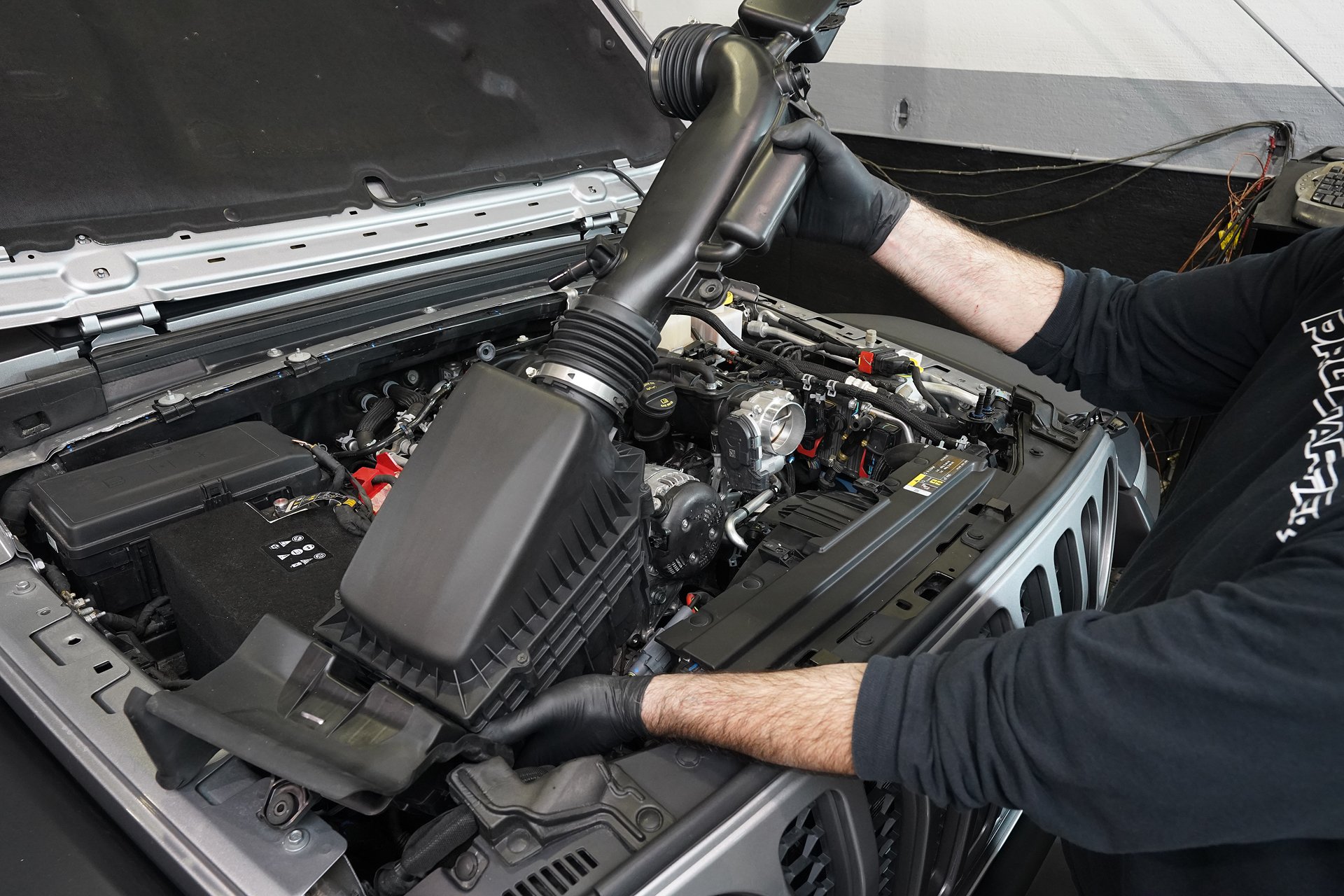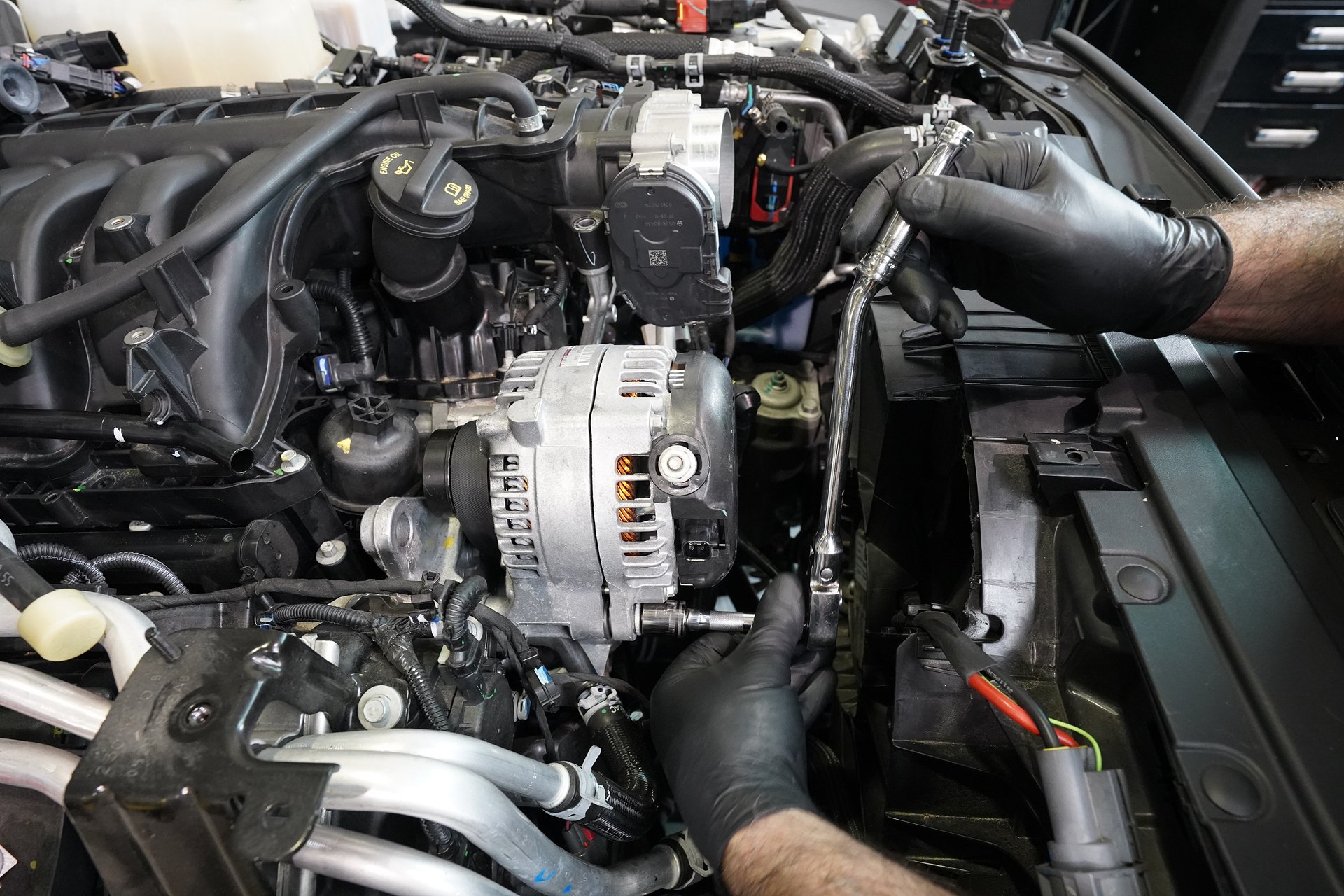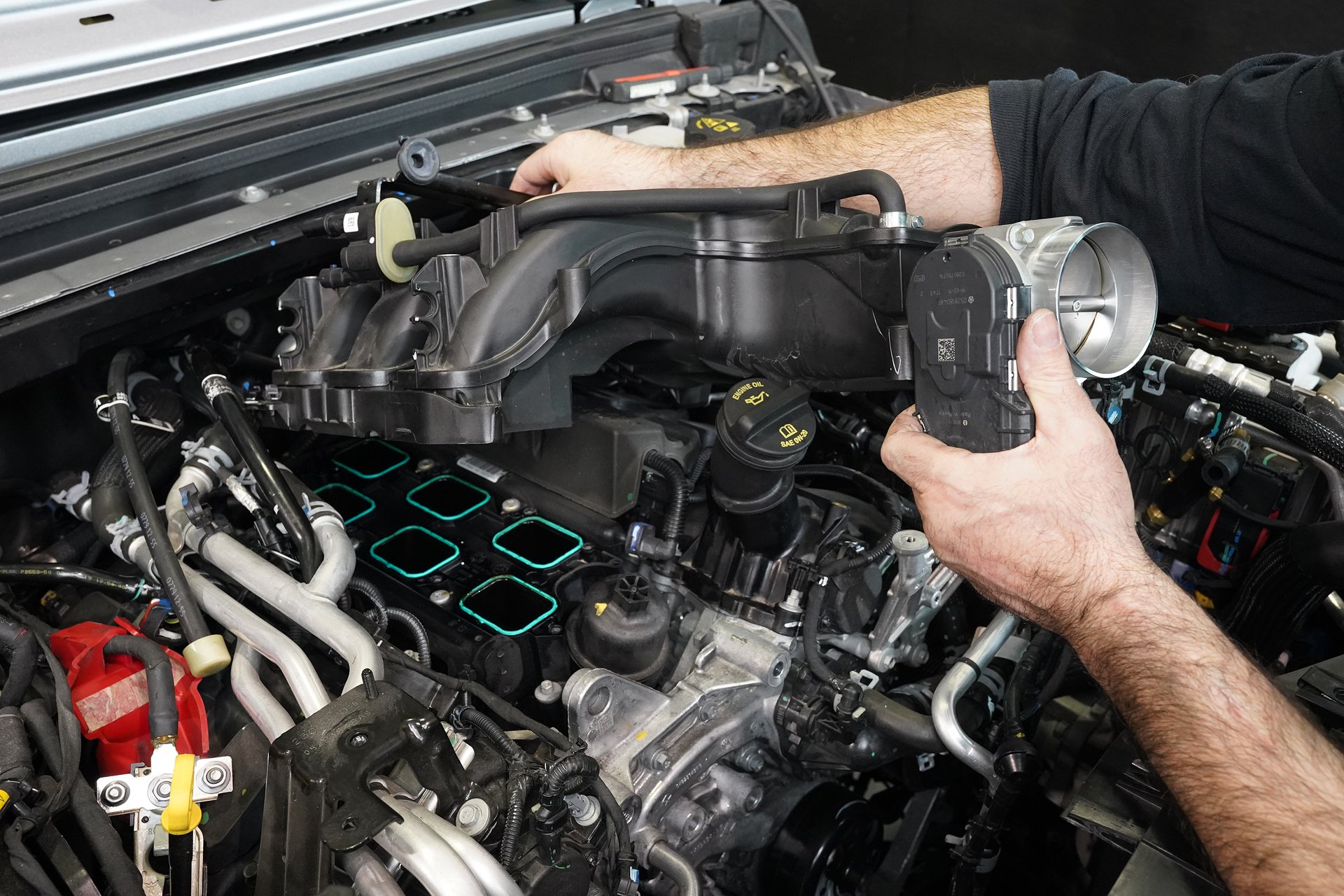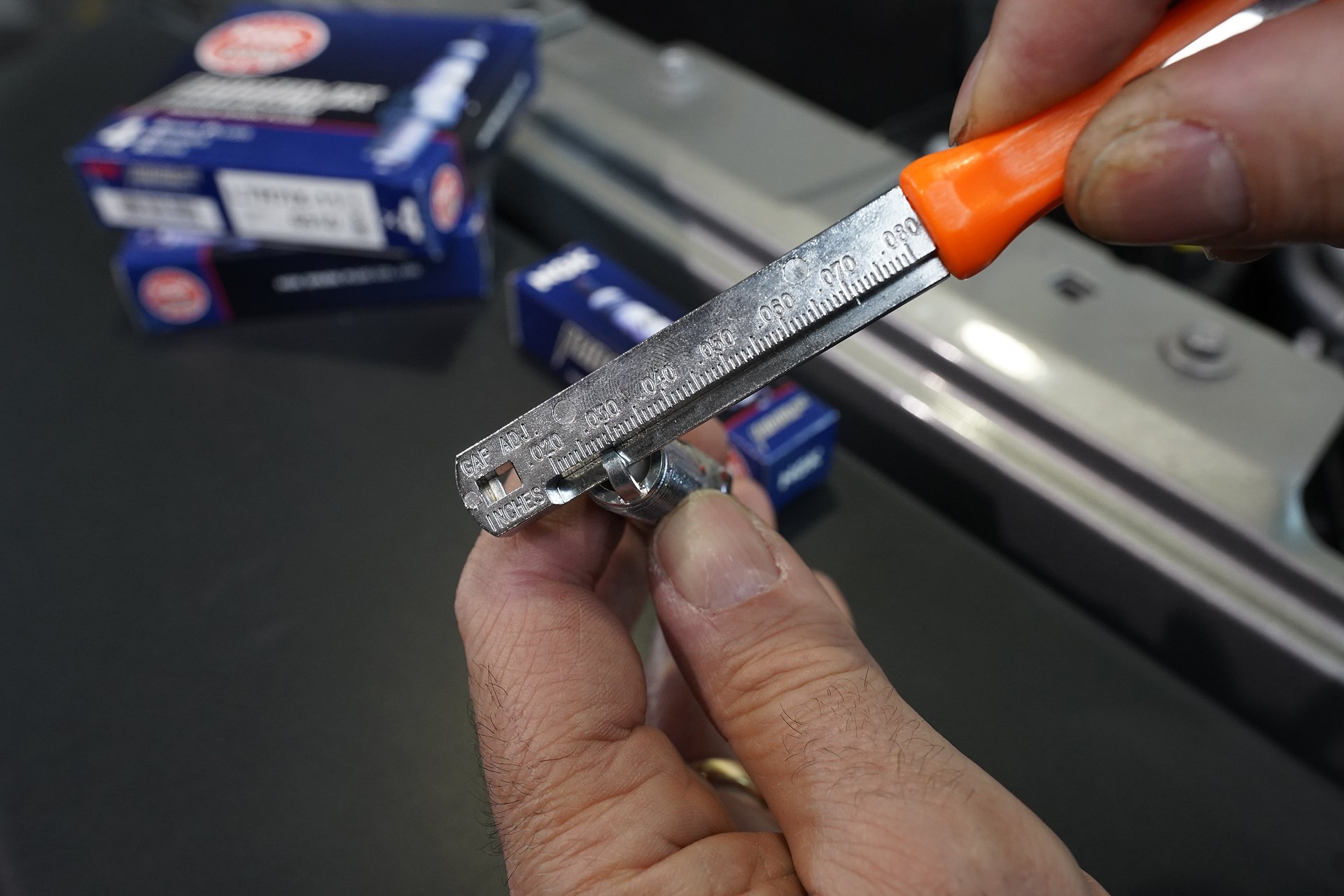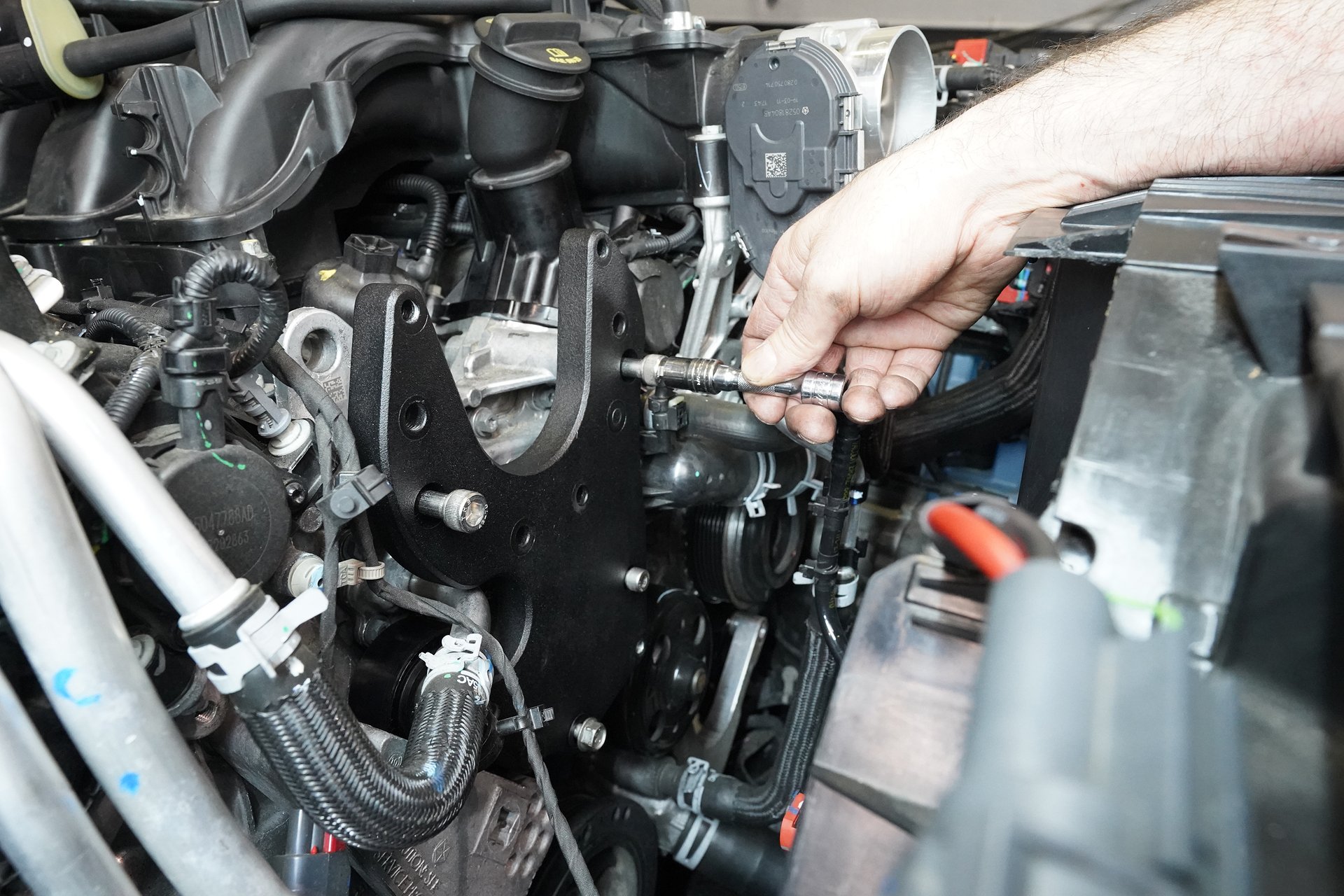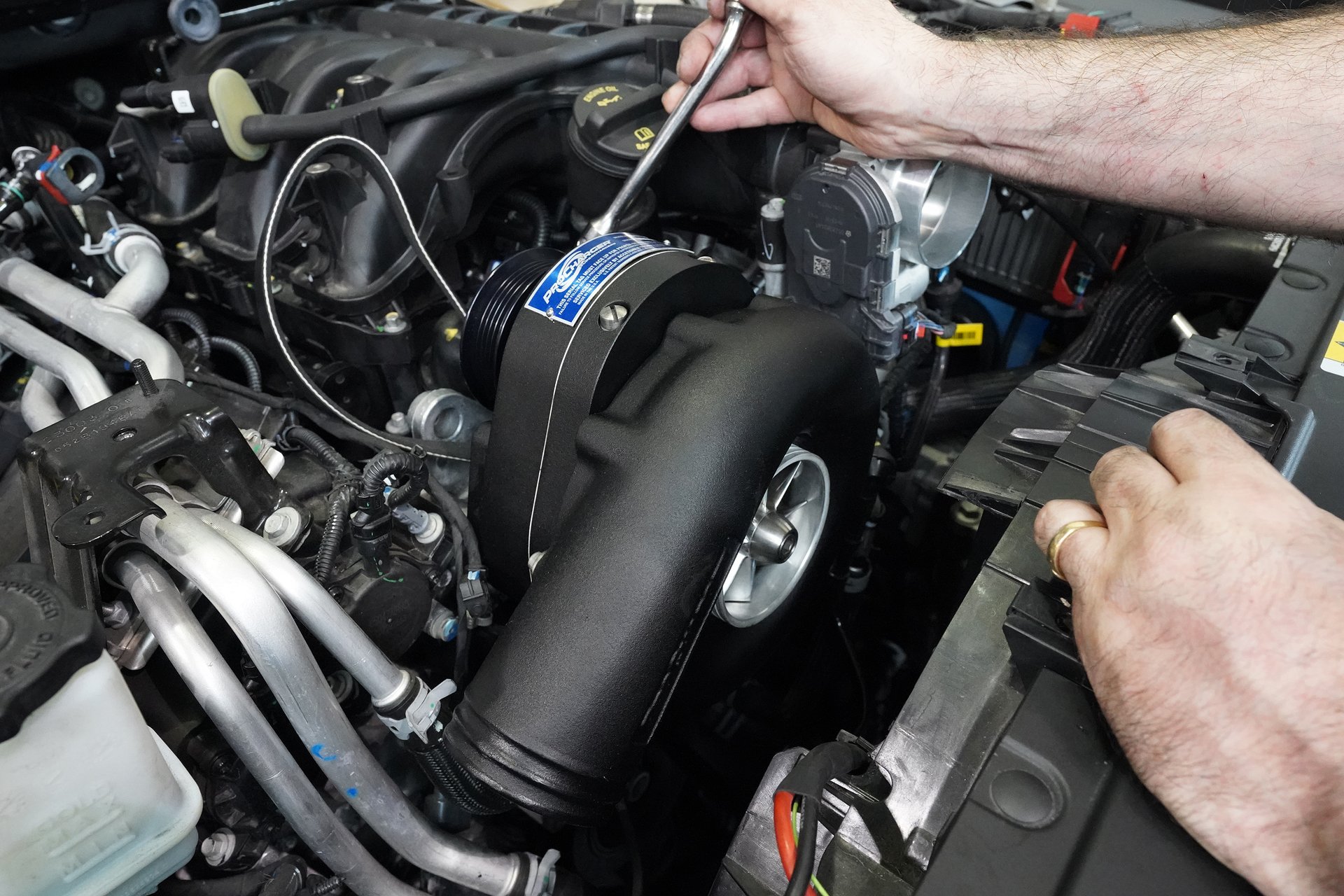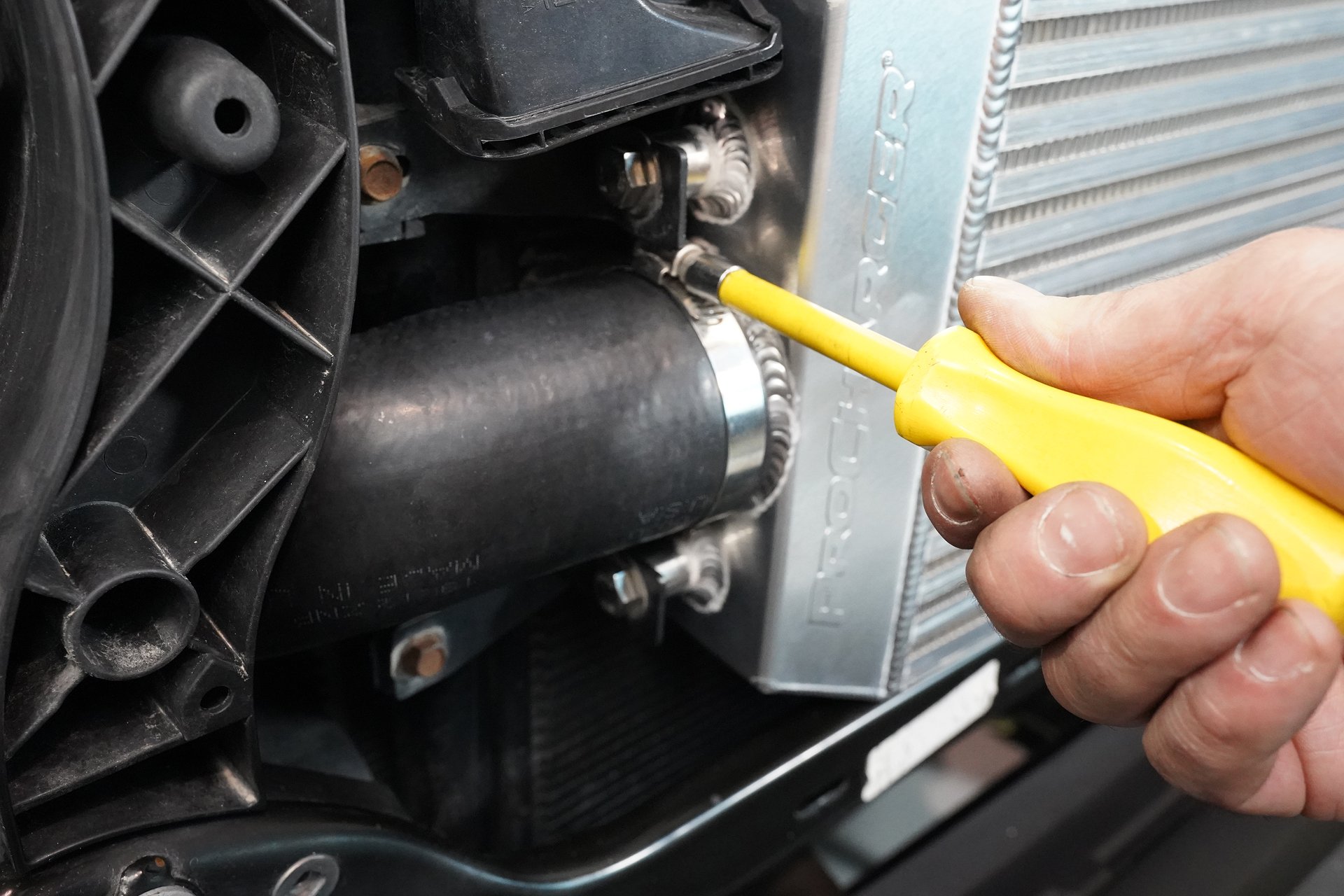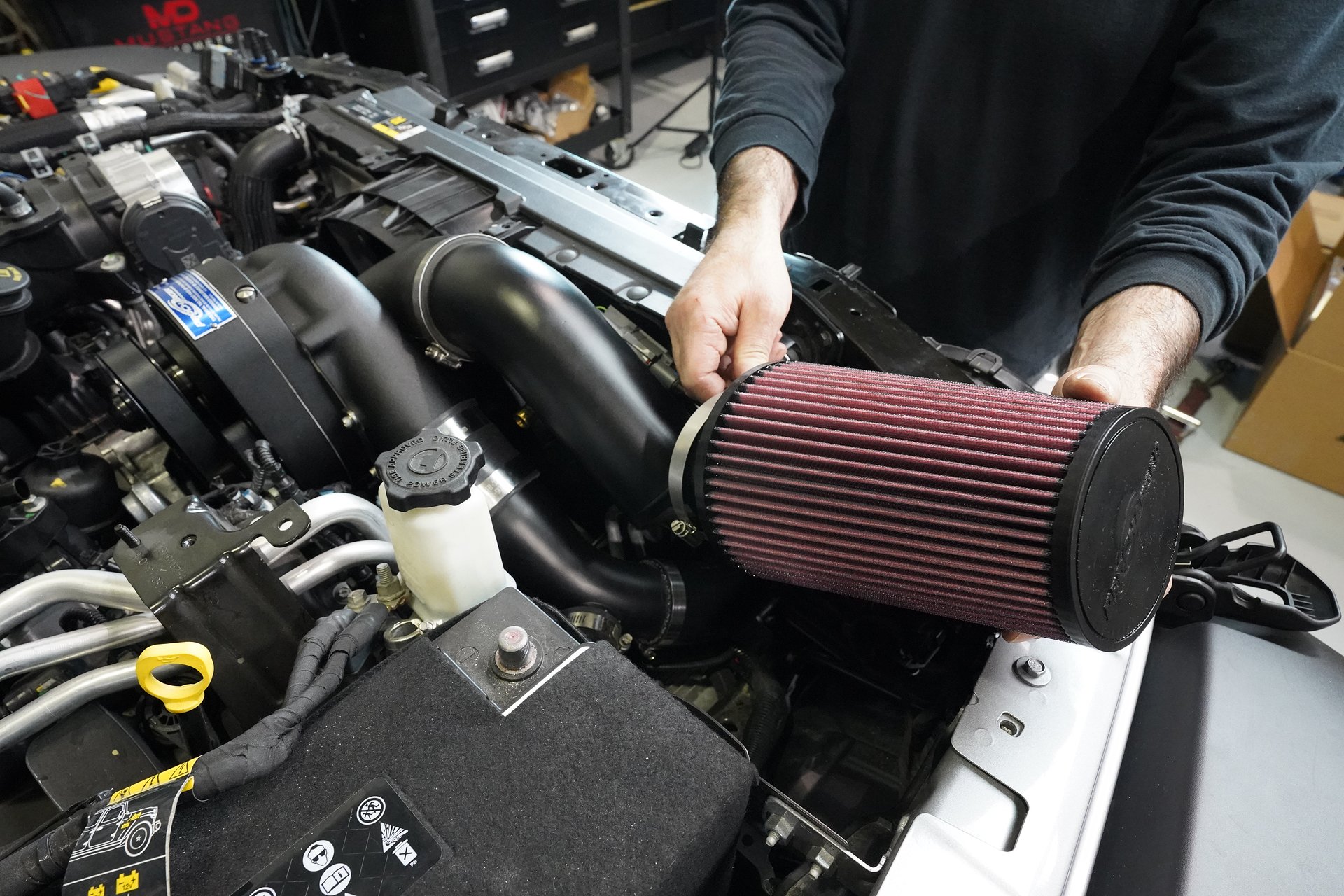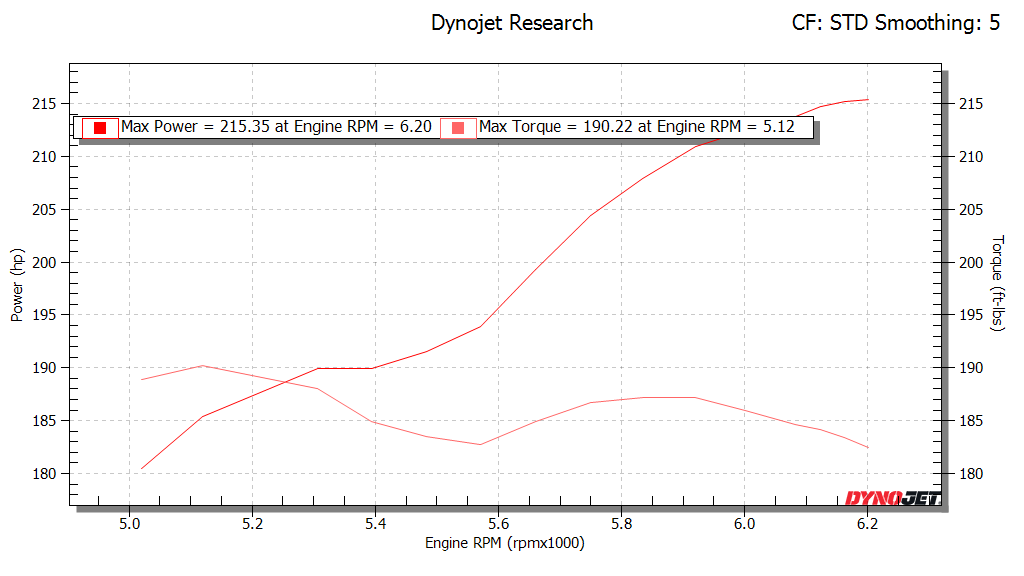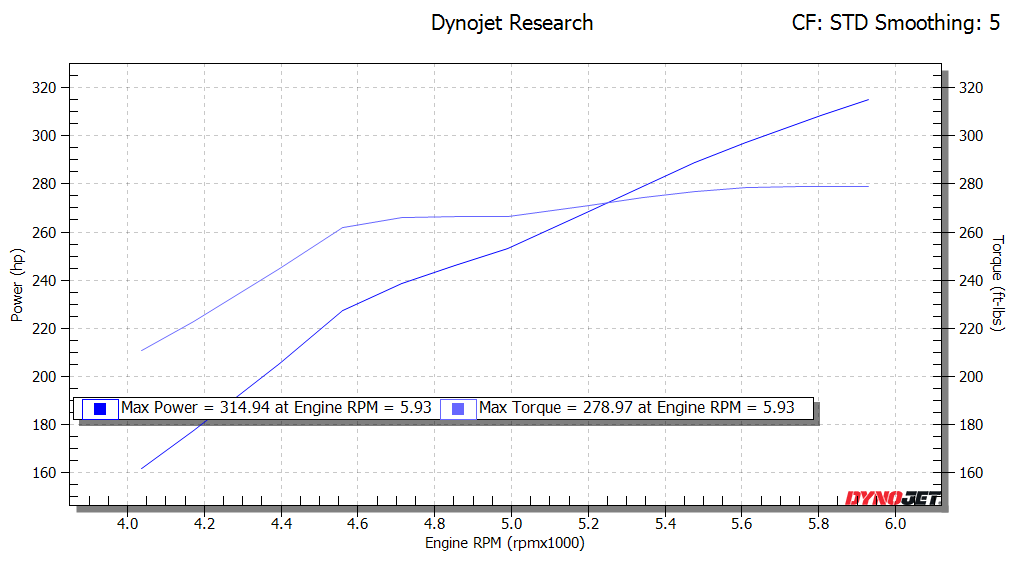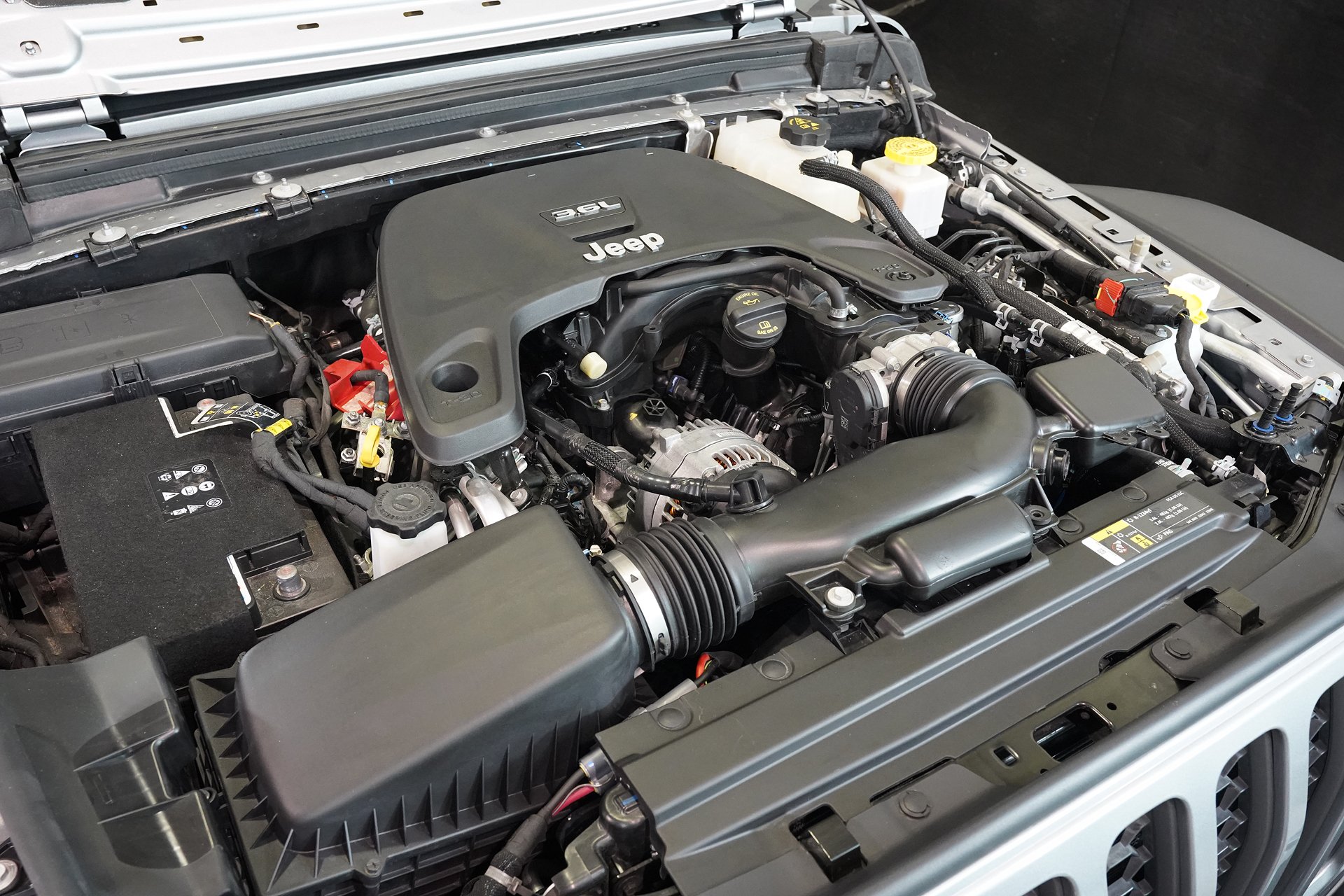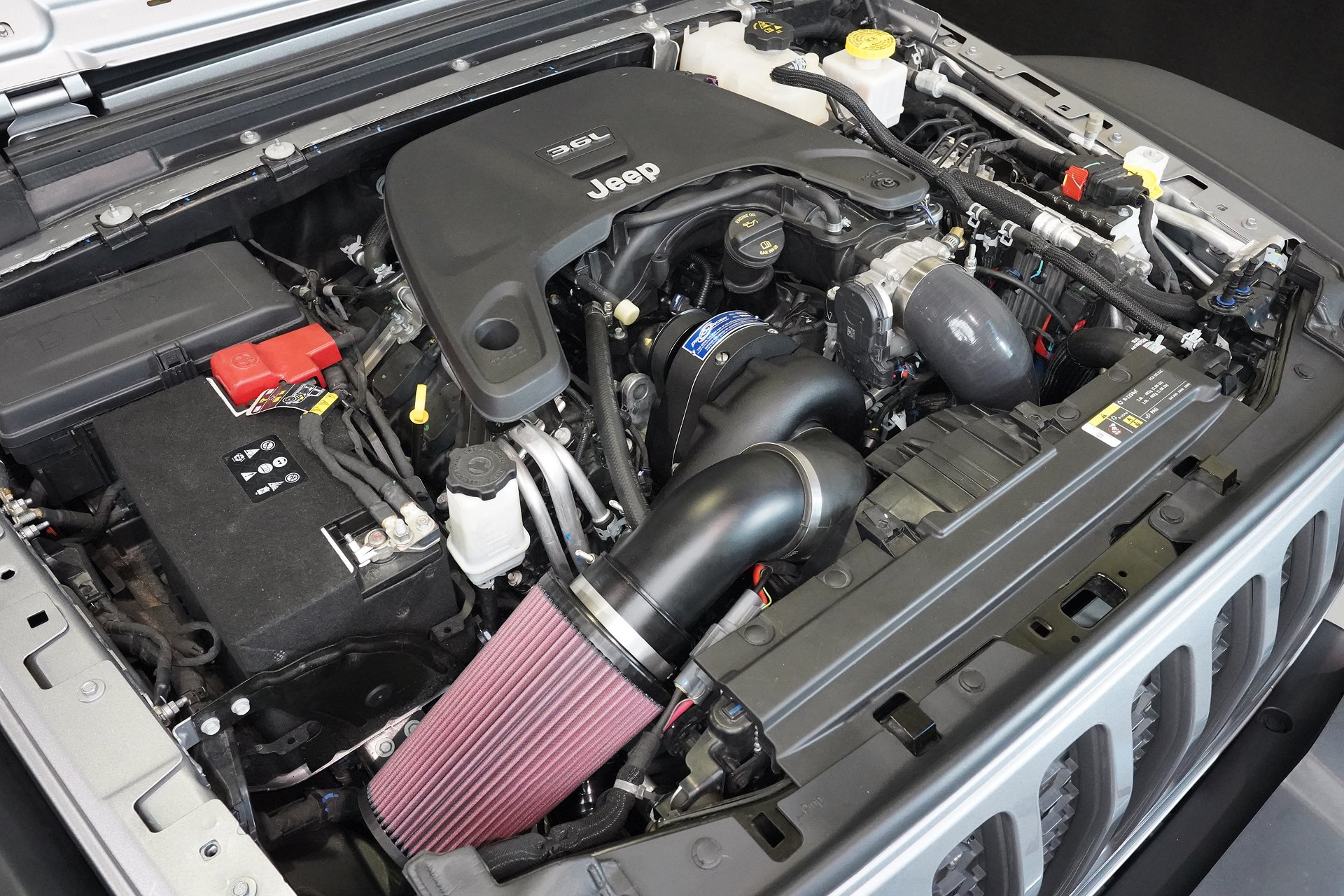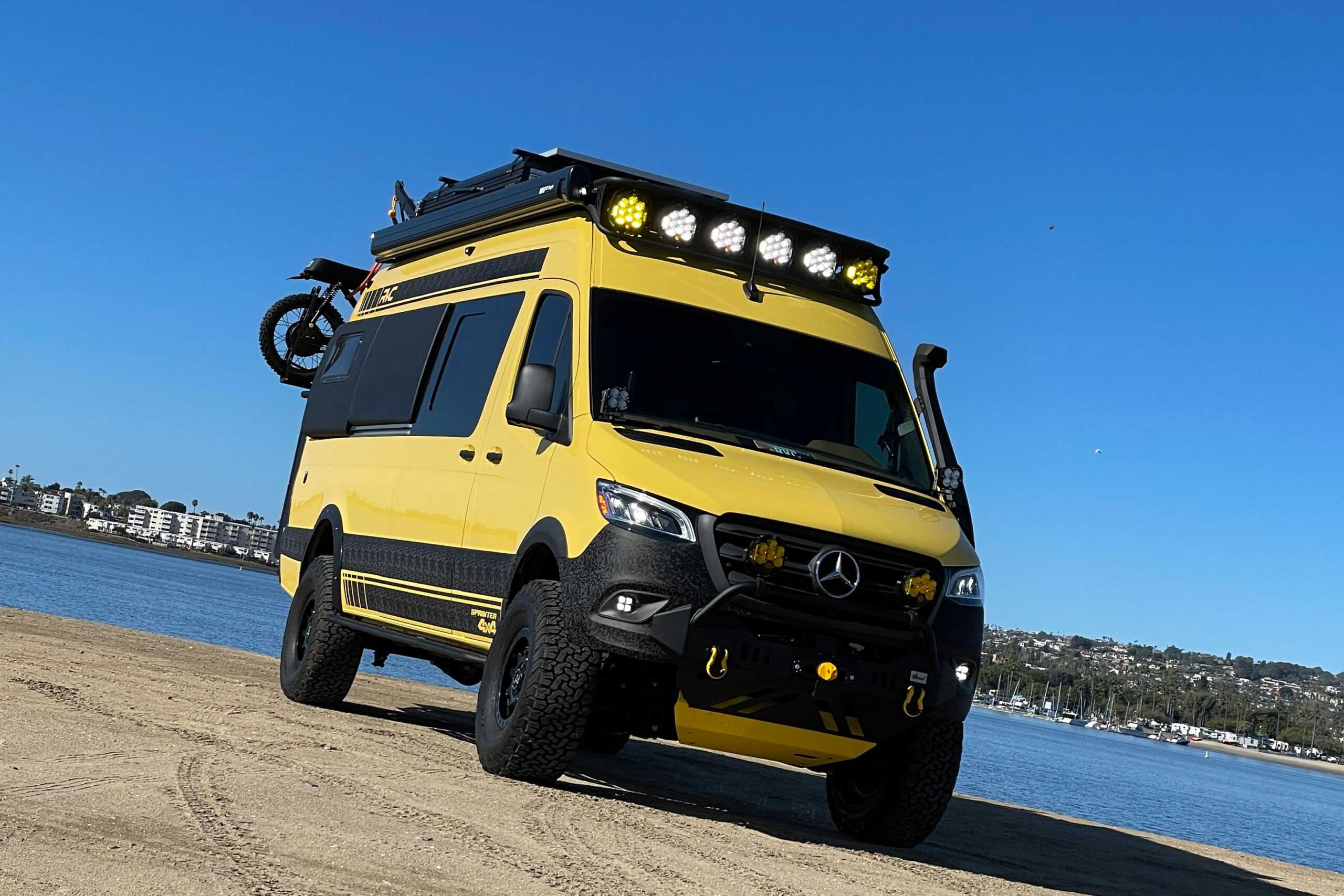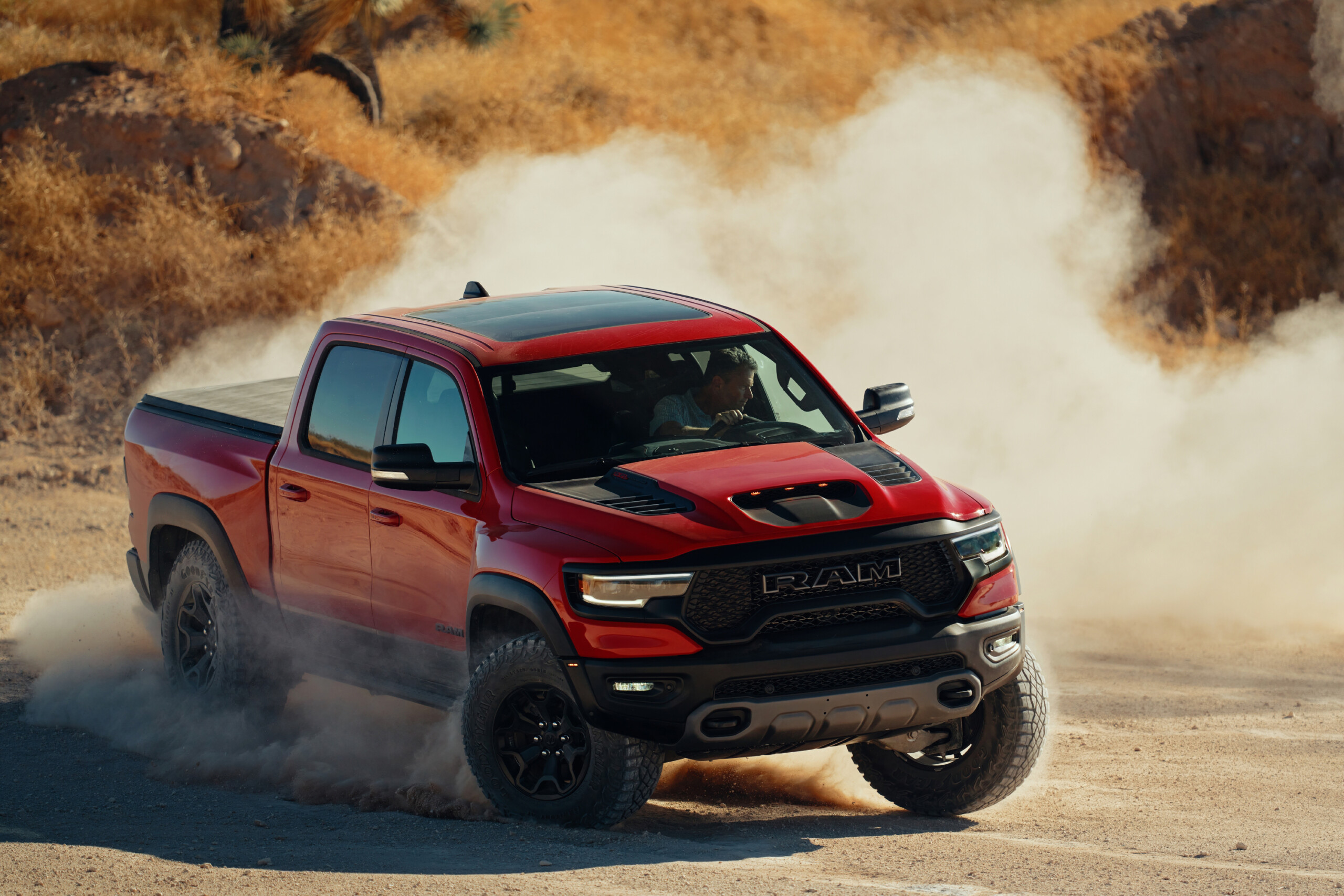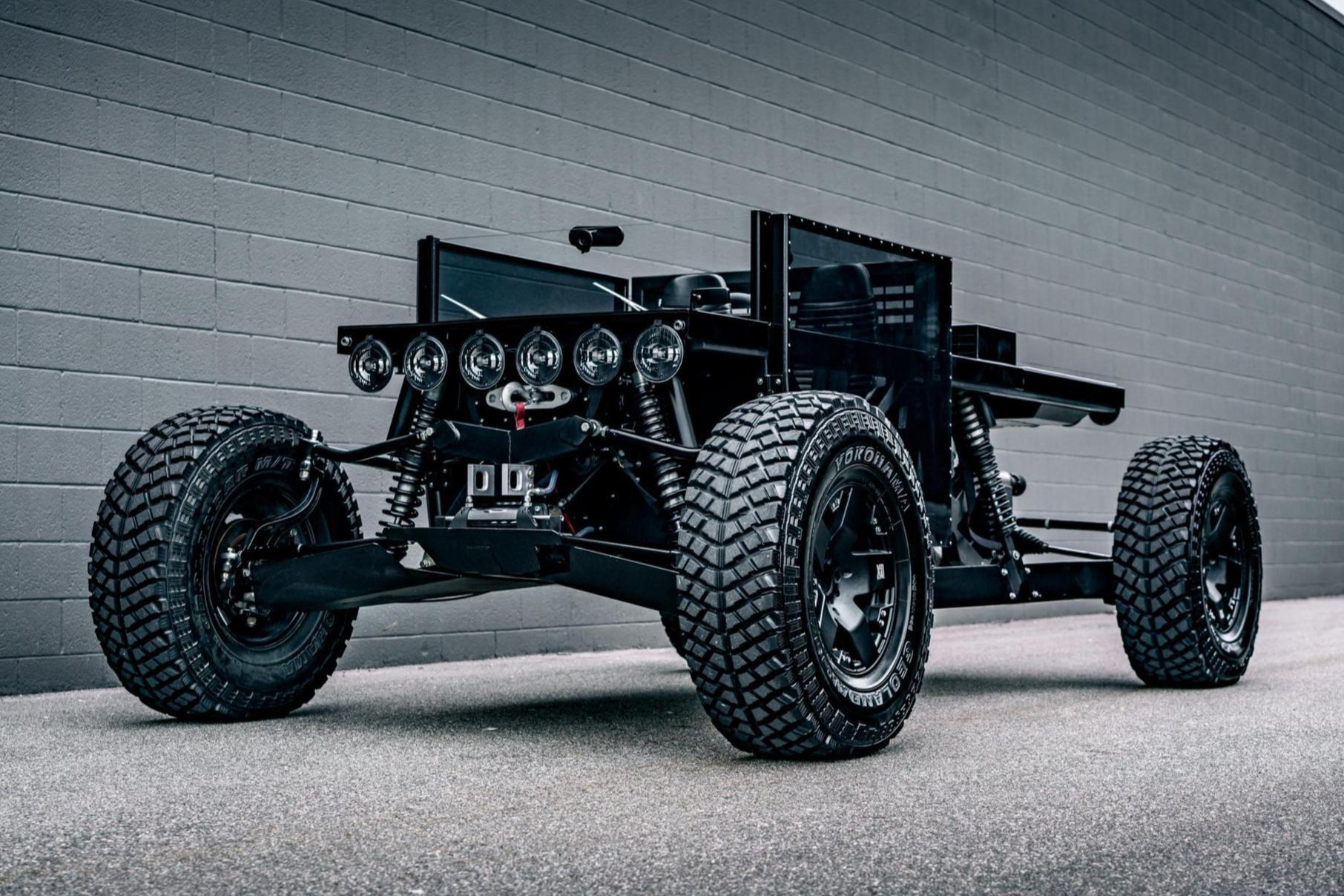The Jeep JL and its pickup variant Gladiator are off the scale in terms of popularity and the vehicles are magnets for modifications, so it’s no surprise that ProCharger has a high-end supercharger system for the Jeeps. One of the first mods a person commonly makes to a new Jeep is adding bigger wheels and tires, and the immediate effect of that is sluggish performance due to the overall gearing change. But now you can add a ton of power for towing, power to pass with the big tires, and crawl over any boulders you can find by bolting on a highly efficient ProCharger supercharger. In this story, ProCharger presents and installs the kit on a 2020 Gladiator.
We spoke with ProCharger’s Erik Radzins to find out some more about this kit and how it completely transforms the new Gladiator into a much more usable vehicle. “Virtually all areas of the power band are increased,” he said. “Guys are really enjoying the centrifugal power curve. It’s proven useful on the trail during rock climbing, and even boosts the Jeep’s capabilities when towing and daily driving.”
It should be pointed out that for best results, ProCharger recommends running 91 or 93 octane fuel with its system. “These engines should be running on at least 91 octane, even before a supercharger is added,” commented Radzins. “The higher octane means the knock sensors will pull less timing, which means more power and better gas mileage; again, even non-supercharged. Once the supercharger is added though, it’s mandatory to run 91 or 93 octane to ensure no engine damage will occur from lackluster fuel. Because with the supercharger, you’re adding a lot of power and it’s even more with good fuel.”
ProCharger is walking us through how to install a new P-1SC-1 supercharger system onto a 2020 Jeep Gladiator JT.
The installations starts with disconnecting the negative battery terminal. “Since we are moving the location of the alternator, and it’s directly connected to the battery, if the customer doesn’t disconnect the battery, they will be in for a shock,” said Radzins. Once that’s done, a number of parts have to be disconnected or removed. These include the engine cover, PCV line, IAT sensor, and air inlet tube. After this, the alternator and its bracket come out, along with the serpentine belt, and then the grille.
With these components out of the way, it’s time to tackle the fuel injectors and intake manifold. The old spark plugs come out as well, and can be reused as long as they are gapped correctly at .035 inches. For best results, ProCharger recommends installing new spark plugs that are one heat range colder than stock.
After removing the necessary parts – air inlet tube, alternator, intake manifold, fuel injectors and more – it's time to start swapping parts out. ProCharger recommends installing a new set of spark plugs that are one heat range colder than stock. Barring that, you can also just reuse the stock plugs, but make sure they are gapped to the correct width.
After reinstalling the manifold, injectors, spark plugs, and fuel rail, the alternator needs to be relocated. A provided bracket allows users to mount the alternator in a new position in front of the timing cover. The new main bracket will occupy the space formerly home to the alternator, and allow users to install the supercharger.
After routing a provided serpentine belt around the pulleys, users can now mount the supercharger bracket and supercharger in place. ProCharger includes a bottle of supercharger oil to pour in once the blower is installed. The tensioner is compressed again to slip the belt on, and now, the installation is on the home stretch.
Installing the supercharger bracket and supercharger.
After rewiring the alternator with provided wire, the intercooler and surge system is installed. The radiator is adjusted slightly to give enough space for the intercooler. Provided tubes and clamps will route air from the supercharger to the intercooler and into the throttle body. The IAT sensor is reinstalled into a tube.
Installing the air-to-air intercooler and wrapping up with the air inlet tube. Just like that, it's done!
The surge system and PCV systems come next, and finally, the new air inlet. An elbow tube angles down to give space for the filter and clearance with the hood. The entire system is now complete and ready for tuning and testing. “We include a tuner in the full system, which is also EO CARB compliant,” said Radzins. “Tuner kits do not include the fuel system parts or the handheld. This is so a tuner shop can do that aspect of the install if they wish.”
ProCharger took the liberty of dynoing the Gladiator before and after. Take a look below at the graphs and their results.
The supercharged engine (right) performed much better at the same RPM range when compare with the stock engine (left). The power band is smoother, and more power is on tap at lower RPMs versus the old setup.
As you can see, now that the P-1SC-1 is installed, the Gladiator is performing much better at the top end. All of that extra air, combined with 91 octane fuel and properly gapped spark plugs, is burning more efficiently and boosting the power output of the Gladiator. The starkest difference is right at 5,000 rpm. The stock setup was making about 182 horsepower and 188 lb-ft of torque. The supercharged setup makes about 100 more horsepower and 100 more lb-ft of torque at the same rpm. That extra power on tap will come in handy for towing or making a quick pass on the freeway.
Even at the lower end, around 4,000 rpm, the Jeep is making more power and torque than it would have on the stock setup. And all through the power band, the supercharged Jeep’s lines are smoother and more in tandem with one another, when compared to stock.
Before and after. ProCharger's smart use of space and relocation of engine components makes the P-1SC-1 able to fit under the hood and have ample clearance.
ProCharger’s supercharger kit for the Jeep Gladiator JT is a home run when it comes to reliable power and remarkable torque. To find out more about this kit, be sure to check out ProCharger’s website and Facebook page.


